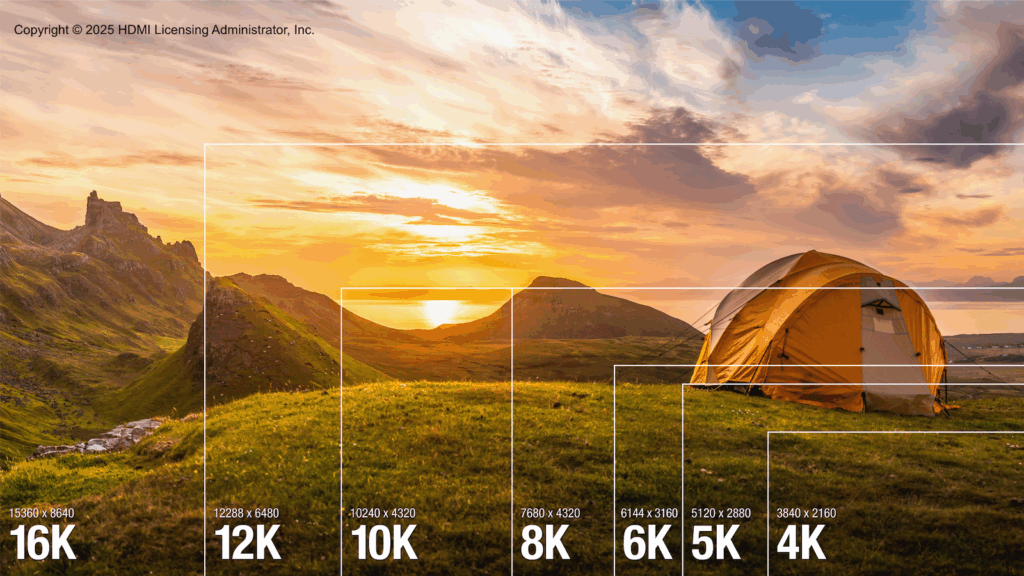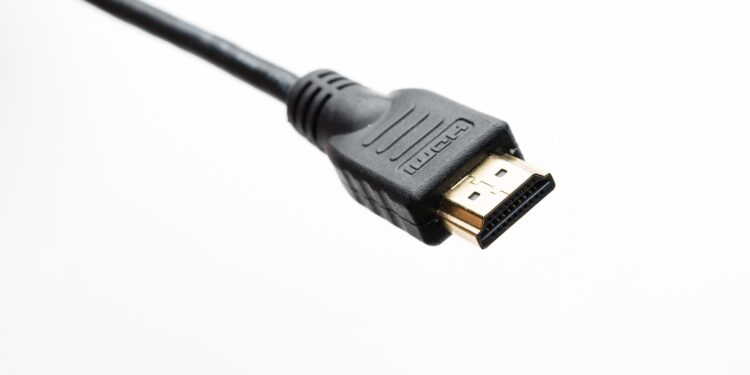HDMI 2.2 is here. The new specification offers significantly higher bandwidth, supports extremely high resolutions, and introduces a new label for cables and devices, Ultra96. Anyone planning on using 16K displays, high frame rates, and lossless transmission in the future should familiarize themselves with the new standard.
The HDMI Forum has introduced HDMI 2.2, the next evolution of the widely used transmission standard. While HDMI 2.1 has been the benchmark until now, HDMI 2.2 sets new standards – not only in maximum resolution, but also in data rate, signal quality, and synchronization. Ultra96 is the name under which new cables and devices are certified to fully exploit the performance of the specification. Anyone planning a modern setup or looking to upgrade existing technology should know the details.
What HDMI 2.2 brings technically
HDMI 2.2 supports a maximum bandwidth of 96 Gbit/s. By comparison, HDMI 2.1 achieved 48 Gbit/s. Doubling the data volume enables extremely high resolutions and frame rates:
- up to 16K at 60 Hz
- up to 12K at 120 Hz
- up to 8K at 60 Hz with full 4:4:4 chroma sampling and 12-bit color depth
- up to 4K at 240 Hz, which is especially interesting for high-end gaming
A next-generation, revised signaling technology called FRL (Fixed Rate Link) is used to transmit these data volumes. It ensures a more stable connection at high bandwidths and reduces errors, such as those caused by electromagnetic interference.

Ultra96 – the new HDMI label
With the introduction of HDMI 2.2, the HDMI Forum is also introducing a new label: Ultra96. This is intended to help users identify which cables and devices actually support the full performance of the standard. Ultra96 is intended as a feature name and does not replace the HDMI connection itself. Ultra96-certified products support:
- 64 Gbit/s
- 80 Gbit/s
- or the full 96 Gbit/s of the HDMI 2.2 specification
The Ultra96 HDMI cable is the successor to the previous "Ultra High Speed HDMI" cable, which allowed a maximum of 48 Gbps. The new cables are necessary if you want to use resolutions like 8K or higher, or if you want to transmit content with high color depth and chroma sampling without compression.

Other new features of HDMI 2.2
In addition to the higher resolution and the new cable category, HDMI 2.2 also brings a feature that's relevant in more complex setups: the so-called Latency Indication Protocol (LIP). It's designed to help improve the synchronization of audio and video—especially in cases where the signal passes through multiple devices, such as AV receivers, splitters, or upscalers, before reaching the display.
Why HDMI 2.2 is important – even if you don’t need 16K yet
Even though hardly anyone has a 16K screen at home these days, HDMI 2.2 is all about future-proofing. The media landscape is evolving rapidly, and 8K content is already available. Frame rates beyond 120 Hz are also becoming increasingly relevant for gaming and professional applications. HDMI 2.2 ensures the necessary data rate and signal stability. Ultra96-certified cables and devices are expected to be released later this year. So, if you're considering an upgrade or planning a new home theater, it's worth paying attention to this label.
HDMI 2.2 – ready for everything that comes
HDMI 2.2 offers everything modern and future video formats require: high bandwidth, high resolutions, new transmission technologies, and better synchronization. Ultra96 is the new feature that lets you know whether your equipment truly supports the new standard. Even if 16K is still a distant dream today, with HDMI 2.2 you're already ready for it. (Image: Shutterstock / Mischoko)
- Apple CarPlay Ultra: These car manufacturers are now saying no
- What is Jony Ive really planning with Sam Altman?





